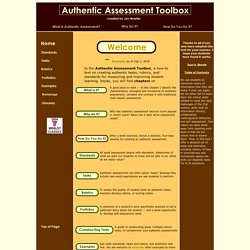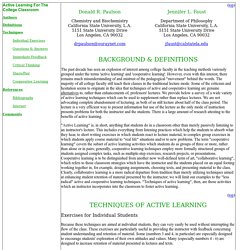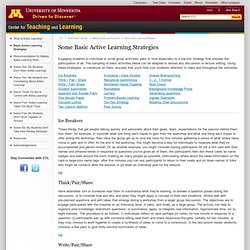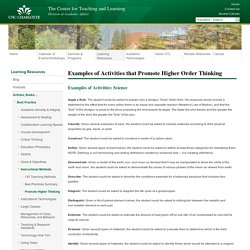

Authentic Assessment Toolbox Home Page. To the Authentic Assessment Toolbox, a how-to text on creating authentic tasks, rubrics, and standards for measuring and improving student learning.

Inside, you will find chapters on A good place to start -- In this chapter I identify the characteristics, strengths and limitations of authentic assessment; compare and contrast it with traditional (test-based) assessment. Why has authentic assessment become more popular in recent years? When can it best serve assessment needs? After a brief overview, follow a detailed, four-step process for creating an authentic assessment.
All good assessment begins with standards: statements of what we want our students to know and be able to do. Authentic assessments are often called "tasks" because they include real-world applications we ask students to perform. To assess the quality of student work on authentic tasks, teachers develop rubrics, or scoring scales. A guide to constructing good, multiple-choice tests, to complement your authentic assessments. Illinois Online Network: Educational Resources : Online Teaching Activity Index. Active and Coopeative Learning. The past decade has seen an explosion of interest among college faculty in the teaching methods variously grouped under the terms 'active learning' and 'cooperative learning'.

However, even with this interest, there remains much misunderstanding of and mistrust of the pedagogical "movement" behind the words. The majority of all college faculty still teach their classes in the traditional lecture mode. Some of the criticism and hesitation seems to originate in the idea that techniques of active and cooperative learning are genuine alternatives to, rather than enhancements of, professors' lectures.
We provide below a survey of a wide variety of active learning techniques which can be used to supplement rather than replace lectures. We are not advocating complete abandonment of lecturing, as both of us still lecture about half of the class period. "Active Learning" is, in short, anything that students do in a classroom other than merely passively listening to an instructor's lecture. Some Basic Active Learning Strategies. Engaging students in individual or small group activities–pairs or trios especially–is a low-risk strategy that ensures the participation of all.

The sampling of basic activities below can be adapted to almost any discussion or lecture setting. Using these strategies, or variations on them, ensures that you'll hold your students' attention in class and throughout the semester. Ice Breakers Those things that get people talking quickly and personally about their goals, fears, expectations for the session before them. Ask them, for example, to consider what one thing each hopes to gain from the workshop and what one thing each hopes to offer during the workshop, then have the group get up to rove the room for five minutes gathering a sense of what others have come to gain and to offer. Top Think/Pair/Share Write/Pair/Share The format for this strategy is identical to the think-pair-share, except that students process the question asked of them by writing about it rather than reflecting. Top. Teaching and Learning Activities. Tips marked with an * indicates that the tip is consistent with learnng-centered teaching Higher Levels of Learning *Student Assignments Higher Levels of Learning *How to produce big gains in your student learning While preparing to teach, or throughout the semester, ask yourself what am I doing to encourage my students to: learn how to learn be motivated help them change their values learn how to interact better with other people integrate concepts that they are learning with other concepts, other courses, their lives, future careers, etc.

Remember developing knowledge is not the only aspect of getting a university degree (Taken from Fink's Taxonomy of Higher Learning) back to top » *Helping student to accept that there is more than one right answer I have heard many faculty say that our students have difficulty accepting that there might be more than one right answer or no right answer. E-learning examples by William Horton Consulting. Examples of Activities that Promote Higher Order Thinking. Examples of Activities: Science Apply a Rule: The student could be asked to explain why a shotgun "kicks" when fired.

His response would include a statement to the effect that for every action there is an equal and opposite reaction (Newton's Law of Motion), and that the "kick" of the shotgun is equal to the force propelling the shot toward its target. The faster the shot travels and the greater the weight of the shot, the greater the "kick" of the gun. Classify: Given several examples of each, the student could be asked to classify materials according to their physical properties as gas, liquid, or solid. Construct: The student could be asked to construct a model of a carbon atom.
Define: Given several types of plant leaves, the student could be asked to define at least three categories for classifying them.